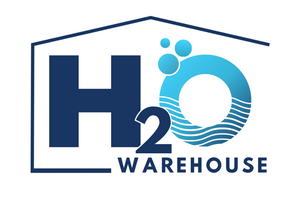Ensuring Safe and Healthy Water for Your Home
Ensuring Safe and Healthy Water for Your Home: Understanding Water Quality in South Africa
Water is the essence of life, an indispensable resource that sustains us in countless ways. Yet, the safety and quality of our tap water can be a topic of concern, particularly in regions where access to clean water is not guaranteed. In South Africa, where the quest for safe drinking water is paramount, understanding the intricacies of water quality is essential for every household. Let's explore the various facets of water quality and its impact on daily life, from the moment water flows from the tap to its role in nourishing our bodies and sustaining our homes.
Understanding Water Quality Parameters:
Water quality is determined by a multitude of factors, each playing a crucial role in ensuring the water we use is safe and suitable for its intended purposes. These parameters include:
- Microbial Contaminants: Bacteria, viruses, and parasites pose significant health risks if present in water sources. Diseases such as cholera, typhoid, and gastroenteritis can result from exposure to these microbial contaminants.
- Chemical Contaminants: Heavy metals, pesticides, and industrial chemicals can leach into water sources, posing health risks upon ingestion or absorption. Chronic exposure to these contaminants has been linked to various health issues, including developmental delays and cancer.
- Physical Contaminants: Sediment, debris, and suspended particles not only affect the appearance and taste of water but also contribute to appliance damage and plumbing issues within the home.
- pH and Hardness: pH levels and water hardness impact water's taste, suitability for various uses, and its effect on plumbing fixtures and appliances.
Water Quality in South Africa:
South Africa has made strides in providing access to safe drinking water, regulated by the Department of Water and Sanitation to meet international standards set by organisations like the World Health Organisation (WHO). However, challenges persist, particularly in rural areas where infrastructure may be lacking, and water sources are vulnerable to contamination.
Common Water Contaminants and Their Impacts:
- Chlorine: While chlorine is essential for disinfecting water and ensuring its safety, it can have adverse effects on home life. Chlorine may cause clothing to fade, fabrics to deteriorate, and skin and hair to become dry and irritated.
- Sediment: Sediment, comprised of dirt, rust, and other debris, can lead to appliance damage, plumbing issues, and dull-looking fabrics. While not necessarily harmful, sediment can impact water quality and household functionality.
- Health Implications: Microbial and chemical contaminants in water pose significant health risks, ranging from gastrointestinal illnesses to long-term developmental and neurological issues.

Ensuring Safe Water at Home:
To address concerns about water quality and safeguard the health and well-being of their families, homeowners can take proactive measures, including:
- Installing water filtration systems to remove impurities and improve taste and safety.
- Regularly testing water quality to identify and address potential contaminants.
- Boiling water as a precautionary measure, especially in areas where water quality may be compromised.
- Conserving water and minimising pollution through responsible household practices.

Conclusion:
In the pursuit of safe and healthy water for our homes, understanding water quality parameters, common contaminants, and their impacts is paramount. By taking proactive steps to address water quality concerns and invest in effective water treatment solutions, households in South Africa can ensure that every drop of water used serves to nourish and sustain, contributing to a healthier and more enjoyable living environment for all.
- Choosing a selection results in a full page refresh.

